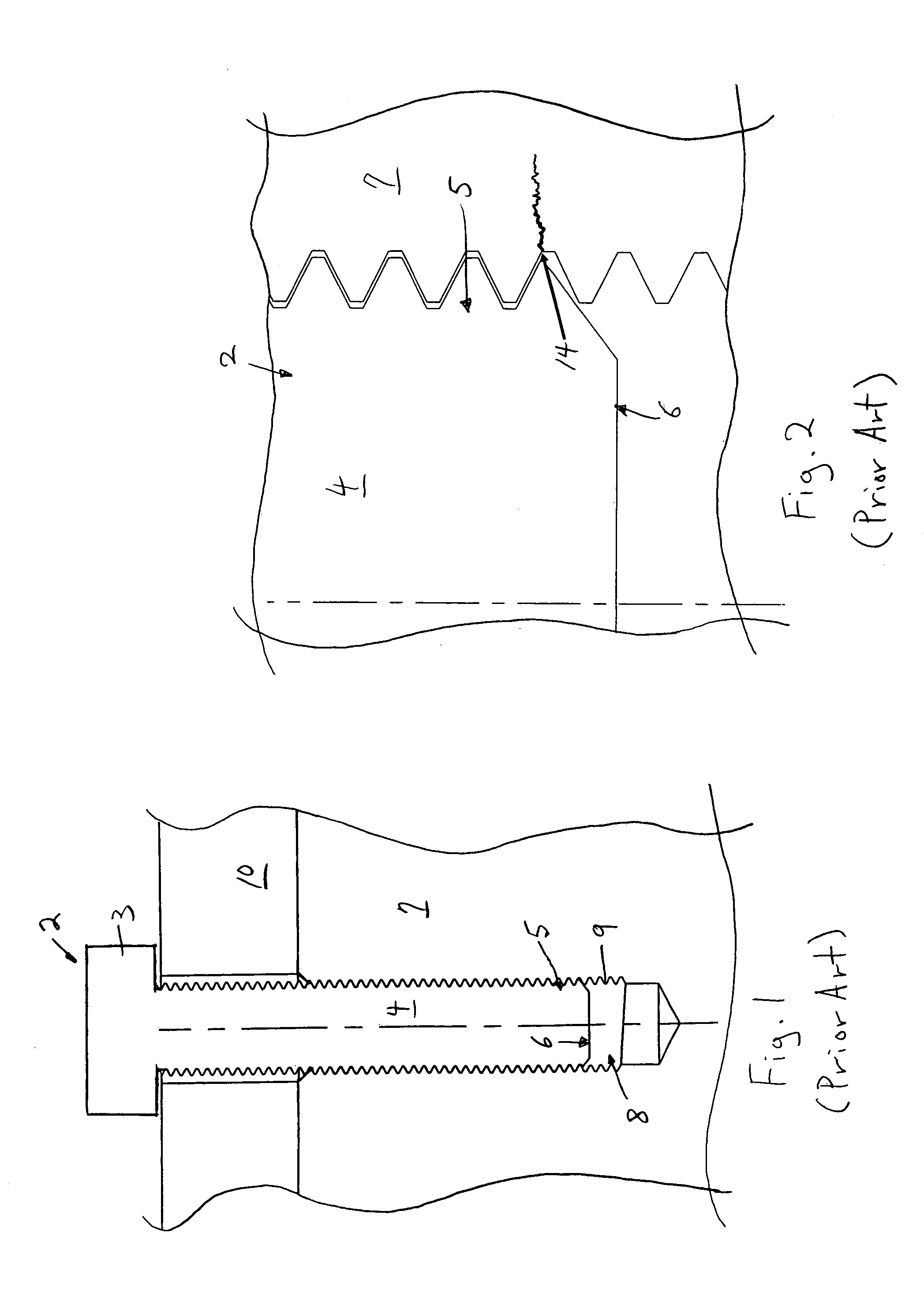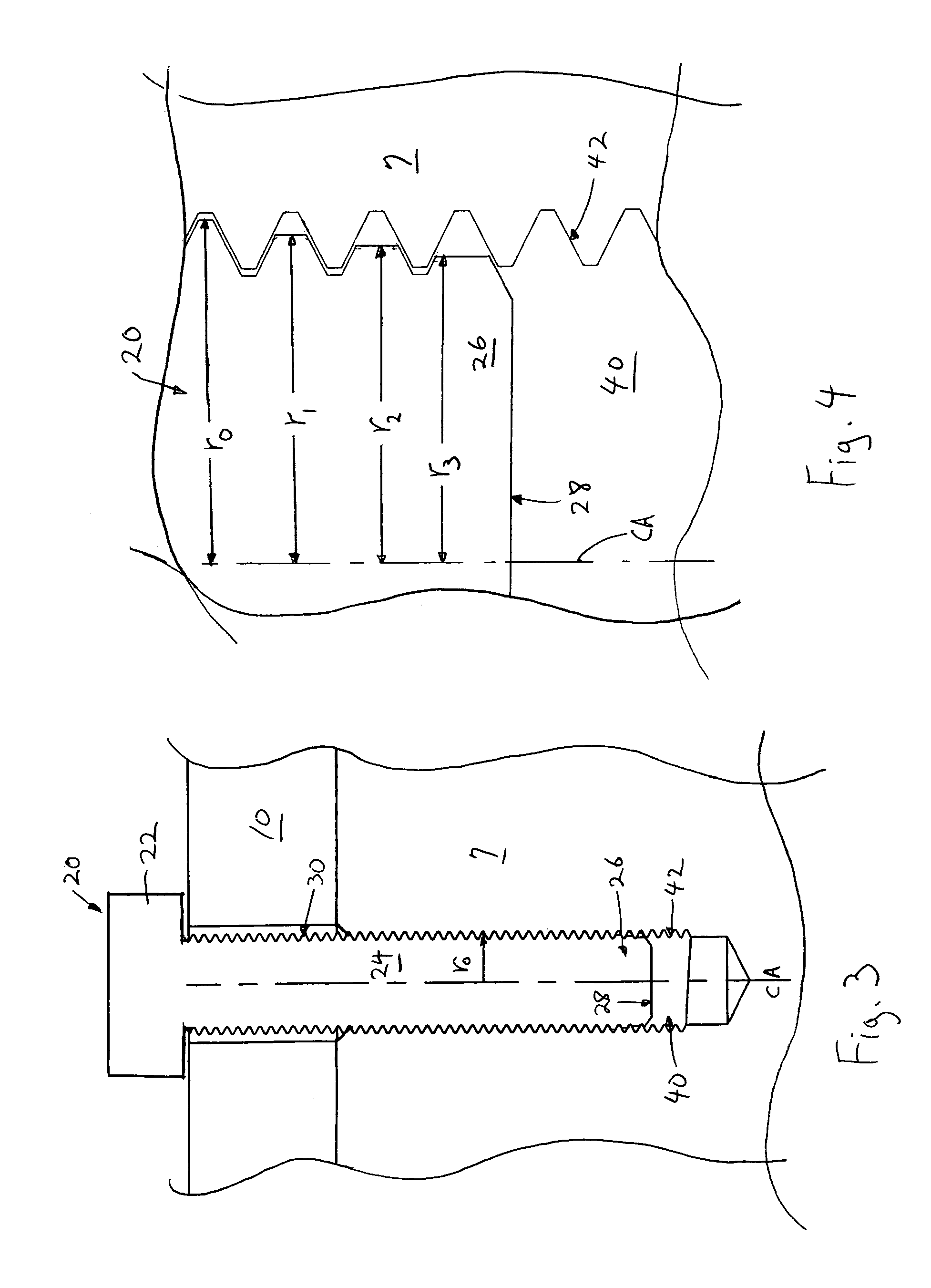Fastener and method for reducing stress failure in an engine component
a technology of internal combustion engine and stress failure, which is applied in the direction of screws, washers, ways, etc., can solve the problems of high torque, significant clamping load, and high torquing of fasteners, so as to reduce the radius, reduce the stress failure of internal combustion engine components, and increase the load carrying capacity of at least a portion of threaded interfaces
- Summary
- Abstract
- Description
- Claims
- Application Information
AI Technical Summary
Benefits of technology
Problems solved by technology
Method used
Image
Examples
Embodiment Construction
[0026]FIG. 1 shows a cross-sectional view of a prior art threaded fastener 2 that is used in an internal combustion engine. As can be appreciated, the threaded fastener 2 is a bolt. The threaded fastener 2 is used to secure two components of an internal combustion engine together, for example, to secure a cylinder head 10 to the engine block 7 in FIG. 1. As can be seen, the threaded fastener 2 includes a head 3, a shank 4, and a threaded tip portion 5 which terminates at a distal end 6. The threaded tip portion 5 is inserted into a threaded hole 8 that is provided in the internal combustion engine component, for example, the engine block 7 shown. The threaded hole 8 includes threads 9 that are engaged by the threaded tip portion 5 of the threaded fastener 2, thereby defining a threaded interface between the threaded tip portion 5, and the threaded hole 8.
[0027]By tightening the threaded fastener 2 into the threaded hole 8, the cylinder head 10 is securely clamped to the engine block...
PUM
 Login to View More
Login to View More Abstract
Description
Claims
Application Information
 Login to View More
Login to View More - R&D
- Intellectual Property
- Life Sciences
- Materials
- Tech Scout
- Unparalleled Data Quality
- Higher Quality Content
- 60% Fewer Hallucinations
Browse by: Latest US Patents, China's latest patents, Technical Efficacy Thesaurus, Application Domain, Technology Topic, Popular Technical Reports.
© 2025 PatSnap. All rights reserved.Legal|Privacy policy|Modern Slavery Act Transparency Statement|Sitemap|About US| Contact US: help@patsnap.com



